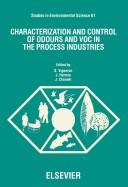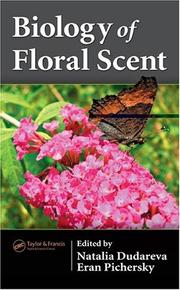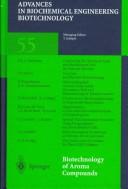| Listing 1 - 10 of 16 | << page >> |
Sort by
|
Book
ISBN: 0250400936 9780250400935 Year: 1975 Publisher: Ann Arbor, Mich.: Ann Arbor science,
Abstract | Keywords | Export | Availability | Bookmark
 Loading...
Loading...Choose an application
- Reference Manager
- EndNote
- RefWorks (Direct export to RefWorks)
Book
Year: 1962 Publisher: Wembley Park: Institute of Packaging,
Abstract | Keywords | Export | Availability | Bookmark
 Loading...
Loading...Choose an application
- Reference Manager
- EndNote
- RefWorks (Direct export to RefWorks)
Food --- Odor control
Book
ISBN: 2040108653 9782040108656 Year: 1980 Publisher: Paris: Dunod,
Abstract | Keywords | Export | Availability | Bookmark
 Loading...
Loading...Choose an application
- Reference Manager
- EndNote
- RefWorks (Direct export to RefWorks)
Wine tasting. --- Wine --- Vin --- Flavor and odor --- Dégustation --- Saveur et odeur --- Wine tasting --- Dégustation


ISBN: 9780444817891 0444817891 9780080875200 0080875203 1281793450 9786611793456 Year: 1994 Publisher: Amsterdam : Elsevier,
Abstract | Keywords | Export | Availability | Bookmark
 Loading...
Loading...Choose an application
- Reference Manager
- EndNote
- RefWorks (Direct export to RefWorks)
The purpose of the symposium was to present recent advances in characterization and control of odour and volatile organic compound emissions in the atmosphere, and to contribute to the state-of-the-art of measurement and sampling tools, impact prediction methods and abatement techniques. Topics covered were: Legislative aspects Emission characterization Abatement technologies, both recuperative and destructive and Reduction methods. Apart from the global problems of climate, all aspects relating to the workplace environment and official regulations were discussed.
Factory and trade waste --- Odor control --- Volatile organic compounds --- Management --- Congresses --- Environmental aspects

ISBN: 0849322839 9780849322839 9780429126666 9781466545052 Year: 2006 Publisher: Boca Raton (USA): CRC,
Abstract | Keywords | Export | Availability | Bookmark
 Loading...
Loading...Choose an application
- Reference Manager
- EndNote
- RefWorks (Direct export to RefWorks)
Flowers --- Plant osmophors --- Pollination by insects --- Morphogenesis --- Molecular aspects --- Odor --- PHY Physiology & Biochemistry --- biochemistry --- physiology --- morphogenesis --- floral biology --- floral ecology --- pollination --- pollinators --- fragrance --- flower volatiles --- Flowers - Morphogenesis - Molecular aspects --- Flowers - Odor
Book
ISBN: 9780231542876 0231542879 9780231177009 0231177003 9780231177009 Year: 2016 Publisher: New York, NY : Columbia University Press,
Abstract | Keywords | Export | Availability | Bookmark
 Loading...
Loading...Choose an application
- Reference Manager
- EndNote
- RefWorks (Direct export to RefWorks)
In his new book, Gordon M. Shepherd expands on the startling discovery that the brain creates the taste of wine. This approach to understanding wine's sensory experience draws on findings in neuroscience, biomechanics, human physiology, and traditional enology. Shepherd shows, just as he did in Neurogastronomy: How the Brain Creates Flavor and Why It Matters, that creating the taste of wine engages more of the brain than does any other human behavior. He clearly illustrates the scientific underpinnings of this process, along the way enhancing our enjoyment of wine.Neuroenology is the first book on wine tasting by a neuroscientist. It begins with the movements of wine through the mouth and then consults recent research to explain the function of retronasal smell and its extraordinary power in creating wine taste. Shepherd comprehensively explains how the specific sensory pathways in the cerebral cortex create the memory of wine and how language is used to identify and imprint wine characteristics. Intended for a broad audience of readers-from amateur wine drinkers to sommeliers, from casual foodies to seasoned chefs-Neuroenology shows how the emotion of pleasure is the final judge of the wine experience. It includes practical tips for a scientifically informed wine tasting and closes with a delightful account of Shepherd's experience tasting classic Bordeaux vintages with French winemaker Jean-Claude Berrouet of the Chateau Petrus and Dominus Estate.
Wine tasting. --- Food --- Food tasting --- Organoleptic analysis of food --- Taste testing of food --- Flavor --- Sensory evaluation --- Taste testing of wine --- Wine and wine making --- Wine --- Sensory evaluation. --- Taste testing --- Analysis --- Odor --- Testing --- Gaging and testing --- Flavor and odor --- Wine tasting
Multi
ISBN: 9780080875101 0080875106 9780444892638 044489263X 1281754633 9786611754631 Year: 1992 Publisher: Amsterdam ; New York : Elsevier,
Abstract | Keywords | Export | Availability | Bookmark
 Loading...
Loading...Choose an application
- Reference Manager
- EndNote
- RefWorks (Direct export to RefWorks)
The increasing concern for odour abatement, and more generally for reduction of air pollution, has caused a rapid growth in the development of air pollution control techniques, several of which are based on biological degradation of the polluting compounds. This book presents a state-of-the-art overview of recent developments in biological techniques for air pollution control. It describes in detail processes for the prevention of odour nuisances and reduction of odour emissions. It also deals with process design and construction of equipment as well as with odour policy measurements at

ISSN: 07246145 ISBN: 3540614826 9783540614821 3540686029 Year: 1997 Volume: 55 Publisher: Berlin, Heidelberg: Springer,
Abstract | Keywords | Export | Availability | Bookmark
 Loading...
Loading...Choose an application
- Reference Manager
- EndNote
- RefWorks (Direct export to RefWorks)
Organic chemistry --- Biotechnology --- Chemistry --- Food science --- Environmental pollution --- Aliments--Odeur--Analyse --- Biochemistry --- Aromatic compounds --- Flavour compounds --- Enzyme activity --- Cell culture --- Biosynthesis --- Immobilization --- Bacteria --- Fungi --- Yeasts --- Monoterpenes --- Biotechnology. --- Food—Biotechnology. --- Pollution prevention. --- Food Science. --- Industrial Pollution Prevention. --- Pollution --- Prevention of pollution --- Environmental protection --- Chemical engineering --- Genetic engineering --- Control --- Prevention and control --- Flavor --- Odor and odorous substances --- Isoprenoid
Book
ISBN: 2876860163 9782876860162 Year: 1988 Publisher: Paris: Bourin,
Abstract | Keywords | Export | Availability | Bookmark
 Loading...
Loading...Choose an application
- Reference Manager
- EndNote
- RefWorks (Direct export to RefWorks)
Odors --- Perfumes --- Odeurs --- Parfums --- Social aspects --- Aspect social --- Smell --- History --- Odors. --- Smell. --- -Olfaction --- Chemical senses --- Senses and sensation --- Nose --- Aromas --- Fragrances --- Scents --- Smells --- Sensory evaluation --- Sense of Smell --- Olfaction --- Smell Sense --- Olfactometry --- Odor --- Social aspects. --- Odorants. --- Odorants --- Odorant --- -Social aspects. --- Aroma --- Fragrance --- Scent --- Odours --- Odors - History --- Odors - Social aspects --- Smell - History
Book
ISSN: 12583030 ISBN: 2738105491 9782738105493 Year: 1998 Volume: 70 Publisher: Paris: Odile Jacob,
Abstract | Keywords | Export | Availability | Bookmark
 Loading...
Loading...Choose an application
- Reference Manager
- EndNote
- RefWorks (Direct export to RefWorks)
Odors --- Smell --- -Smell --- -Social aspects --- History --- Odors. --- Smell. --- -#VCV monografie 1999 --- Olfaction --- Chemical senses --- Senses and sensation --- Nose --- Aromas --- Fragrances --- Scents --- Smells --- Sensory evaluation --- Sense of Smell --- Smell Sense --- Olfactometry --- Odor --- Social aspects. --- Odorants. --- Odorants --- Odorant --- Aroma --- Fragrance --- Scent --- Odours --- Social aspects --- Odors - - Social aspects --- Smell - - History --- -Odorants --- -Odors --- -Smell -
| Listing 1 - 10 of 16 | << page >> |
Sort by
|

 Search
Search Feedback
Feedback About UniCat
About UniCat  Help
Help News
News